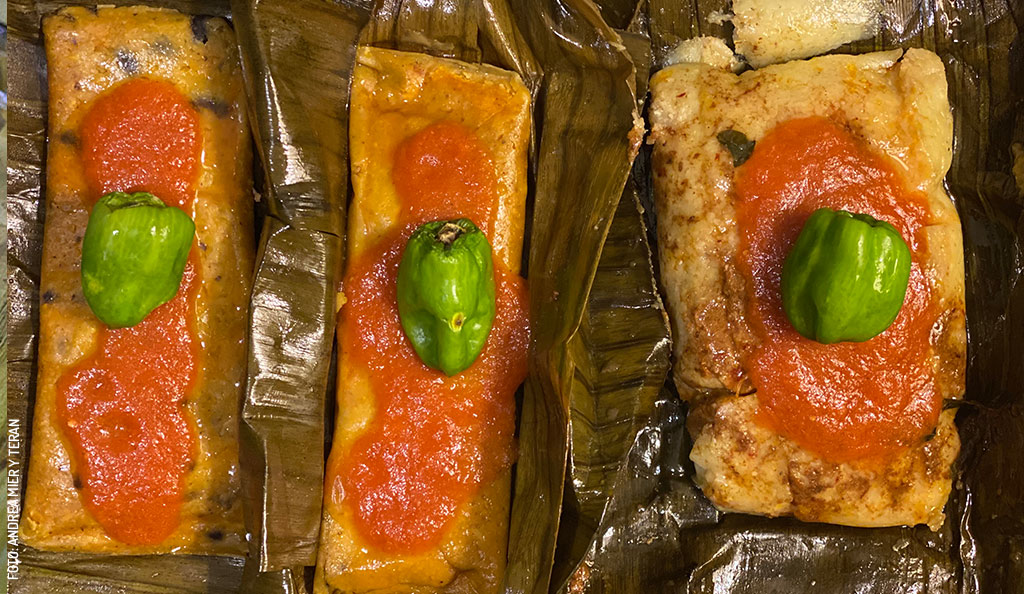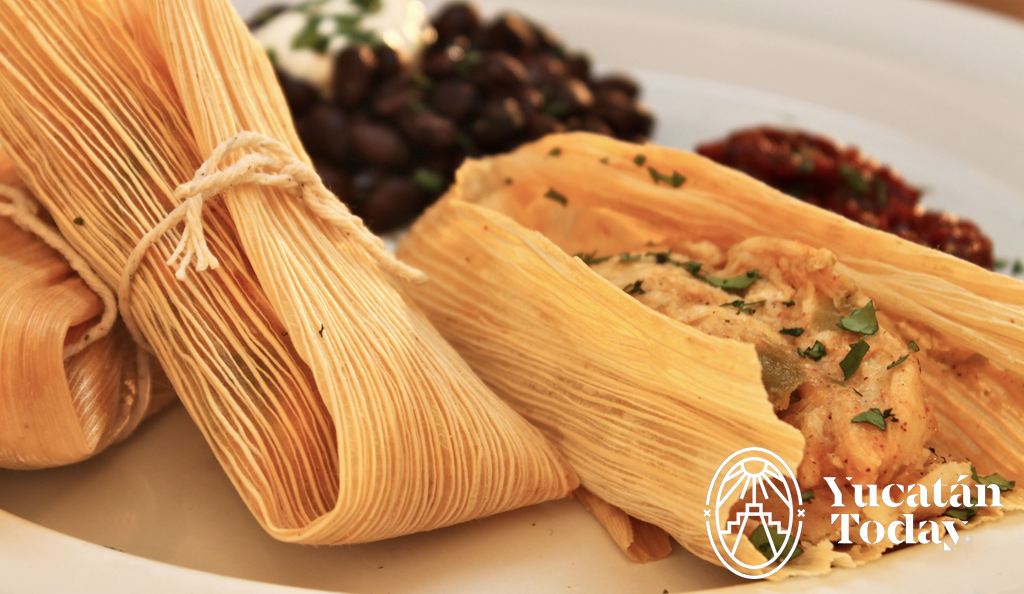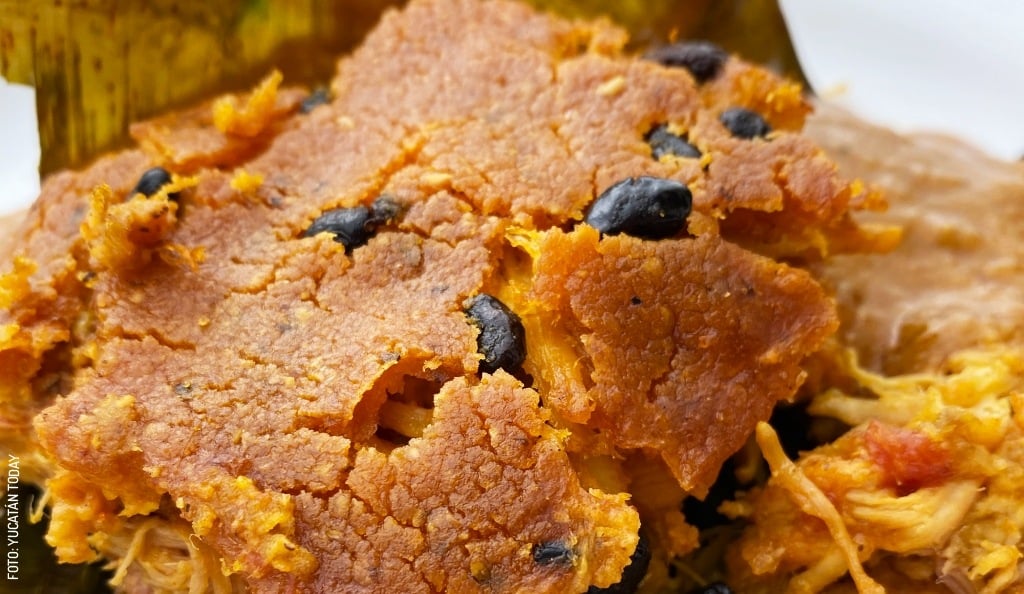
The Multiverse of Yucatecan Tamales
During the Finados season and, specifically, the Janal Pixan festivities, one of the most traditional elements you'll find in Yucatán is the pib or mukbilpollo. This is a very special type of tamal, distinguished by its preparation, fillings, and history. But it's far from the only type of tamal you'll find in our state.
There are many other varieties that, to a greater or lesser extent, are also emblems of these dates and other celebrations throughout the year. What's more, they're essential to Yucatecan cuisine. Here are some of the most well-known types:
Vaporcitos

Also known as tamales torteados, vaporcitos are a classic for Yucatecan lunches and dinners, especially during the cold or rainy season.
Their name comes from their cooking method: they're steamed (vapor means "steam"). The dough is thin, and they're wrapped in plantain leaves. They're usually filled with chicken, pork, or turkey, depending on where you buy them.
Vaporcitos are the quintessential protein in Yucatecan celebrations, especially for birthdays: they’re a centerpiece of what Yucatecos call “plato de fiesta (party plate),” which include an assortment of Yucatecan snacks.
Tamales colados

These are a favorite among Yucatecos for how easy they are to find. They are known for their soft dough, their larger size, and for having the meat placed on top.
They get their name from their preparation, as the dough is strained (colado means "strained") before cooking, which changes its final consistency and thickness. Wrapped in plantain leaves and steamed, they are generally filled with chicken, and their smooth texture melts in your mouth.
Brazo de reina

This one is my personal favorite. It's distinguished by being thicker than other tamales and by the chaya leaves mixed into its dough. The filling includes hard-boiled egg and ground pumpkin seeds. It's traditionally served with fresh tomato sauce. This is a typical dish for Lent or the Holy Week vigil since it contains no meat. As an extra note, it’s usually a bit more expensive than the others: prices start at around $60 pesos.
Pib o Mukbilpollo

This is probably the most famous Yucatecan tamal. As mentioned before, it's the key dish of Janal Pixan, and many Yucatecans look forward to enjoying it all year.
Its name comes from the Maya word píib, which refers to an underground oven: a hole in the ground with stones and wood at the bottom, where this dish is slow-cooked.
Its main ingredients include dough, lard, annatto, meat (chicken or pork), k’ool or Yucatecan pebre (a sauce thickened with dough), onion, tomato, and epazote. Today, many variations exist, and each family may have its own recipe. More exotic versions are also sold with sophisticated fillings like castacán, lomitos, or smoked meat.
Still curious? Learn all about pib or mukbilpollo, a Yucatecan Day of the Dead tradition.
Cultural note: If a family member has recently passed away, it’s not recommended to prepare pib, as it’s believed to symbolize wrapping the person’s body.
Other types of Yucatecan tamales

In Yucatán, you can also find:
- Chachak Waaj: This is a baked tamal, its red color coming from annatto. It's a specialty of the eastern part of the state and is known for its crunchy texture and golden crust. It can be made in a home or bakery oven.
- Chanchamitos: These are small and oval-shaped (also found in other southeastern states).
- Dzotobilchay: Very similar to the brazo de reina because they share the same ingredients (chaya, egg, and ground pumpkin seeds) but vary in size and shape.
Where and how much are Yucatecan tamales?
There isn't just one place to find them: markets, neighborhood street stalls, food carts, or regional restaurants always offer some variety.
The price varies depending on the type and location: a tamal colado can cost around $25 pesos, a brazo de reina is about $60 pesos, and a pib, due to its complex preparation, can exceed $300 pesos.
Extra fact: Although most Yucatecan tamales have meat, there are also versions with ingredients like chaya, cheese, or black-eyed peas (espelón).
As you can see, the universe of Yucatecan tamales is vast; we could write an entire book on each one and still not be finished. The most important thing is that, no matter their shape or size, they will always preserve Yucatecan flavor and tradition.
So now you know: as soon as you finish this article, go out and find one! Your stomach will thank you.
First published in Yucatán Today print and digital magazine no. 454, in October 2025.

Author: Carlos Guzmán
I am a man of few words but with many ideas and emotions that I like to express through my writings. I am passionate about traveling and exploring the world, especially my beautiful and beloved México. These days, I am the content coordinator at Yucatán Today, and I enjoy promoting the best that the state has to offer.
In love with Yucatán? Get the best of Yucatán Today in your email.
Don't miss our best articles and the monthly digital edition before anyone else.
Related articles

Recipe for Yucatecan Tamales
Yucatecan tamales: the jewel of the peninsula. Wrapped in banana leaves, they are a tradition for every party and Janal Pixan offering.
Recipe for Mexican Tamales
The perfect recipes for sweet or regular Mexican tamales




